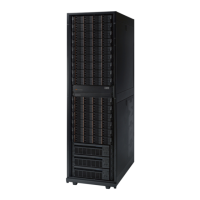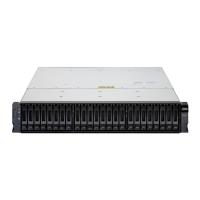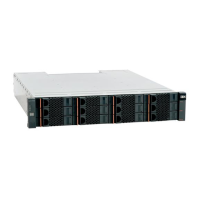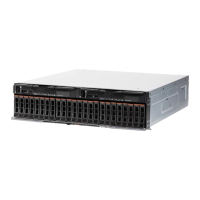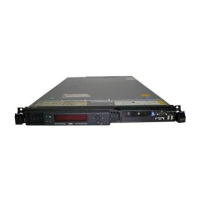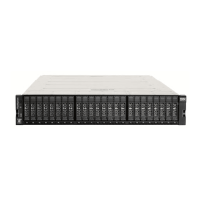All IBM equipment has been tested in climate chambers duplicating shipping
temperatures of - 40°C (- 40°F) to 60°C (140°F) and condensation and frost do not
impact reliability of the product.
It is highly recommended that the device not be removed from the shipping
package for at least 24 hours, in order to acclimate to the new temperature
conditions. If there are still visible signs of condensation after the initial 24 hour
wait period, acclimate the system without the shipping bag for an additional 12-24
hours, or until no further visible condensation remains. If package material
removal is necessary, equipment should be placed in a location away from any air
vents.
Air circulation and cooling
You can take steps to optimize the air circulation and cooling for your XIV system.
Procedure
To optimize the cooling around your XIV system, complete the following steps:
1. Install the XIV system on a raised floor, which provides increased air
circulation for better cooling.
For more information, see “Raised or non-raised floor considerations” on page
29.
2. Install perforated tiles in the front and back of each base rack and expansion
rack as follows:
a. For a stand-alone base rack, install two fully perforated tiles in front of the
base rack and one partially perforated tile at the back of the base rack.
b. For a row of racks, install a row of perforated tiles in front of the racks and
one or two fully perforated tiles at the back of each two racks.
c. For groupings of racks, where a hot aisle and cold aisle layout is used, use a
cold aisle row of perforated tiles in front of all racks. For hot aisles, install a
perforated tile per pair of racks.
For more information, see “Preparing for raised-floor installation and cabling”
on page 32.
3. (Model 281x-114, model 281x-214, and model 281x-314 only) Consider using the
rear-door heat exchanger (feature code 0082) to further reduce the temperature
of the air that leaves the rack.
The rear-door heat exchanger is a water-cooled door that is designed to remove
heat that is generated from the rack before it enters the computer room. The
door uses standard fittings and couplings. The door removes up to 50,000 BTUs
of heat, which is approximately 15 kW, from the air that exits a rack that is full
of servers.
The rear-door heat exchanger can increase server density without increasing
cooling requirements, making the option a more cost-effective solution than
adding an air-conditioning unit. This door is an effective solution for a data
center at the limit of its cooling capacity, but that still has usable floor space to
add racks. The rear-door heat exchanger is also an efficient way to deal with
computer room hotspots.
For more information, see “Rear-door heat exchanger feature” on page 22.
4. Ensure that the installation site meets the cooling (thermal dissipation)
requirements that are listed in the following table.
Chapter 6. Installation site requirements 43

